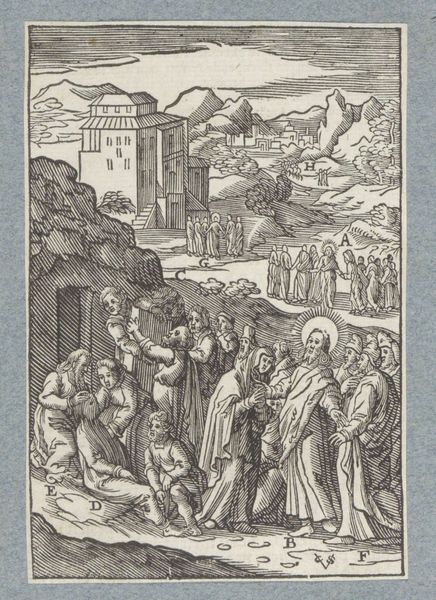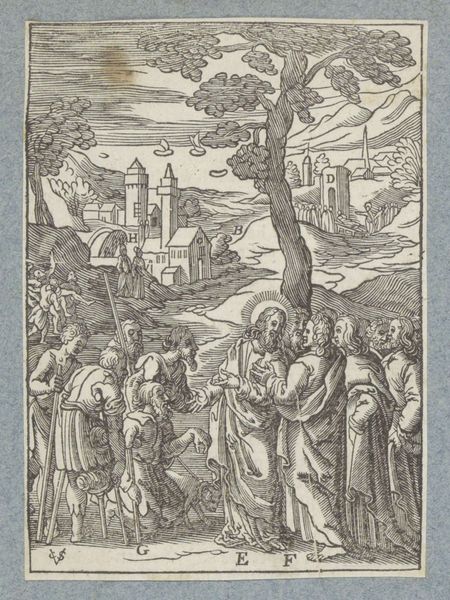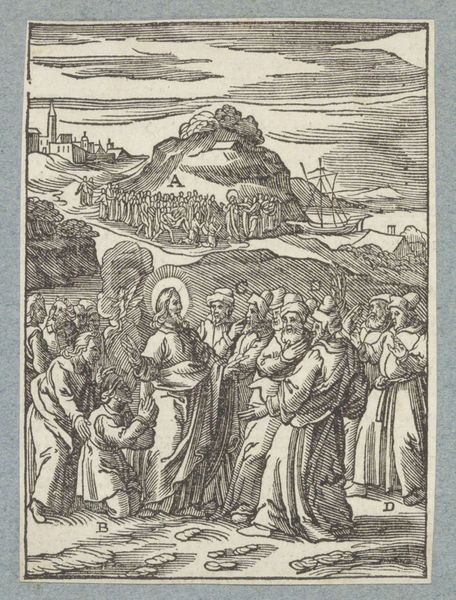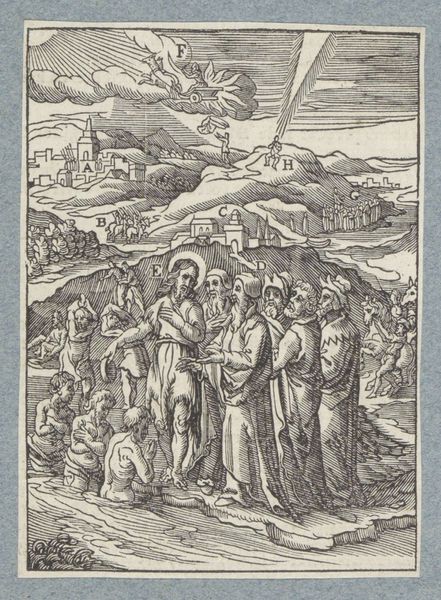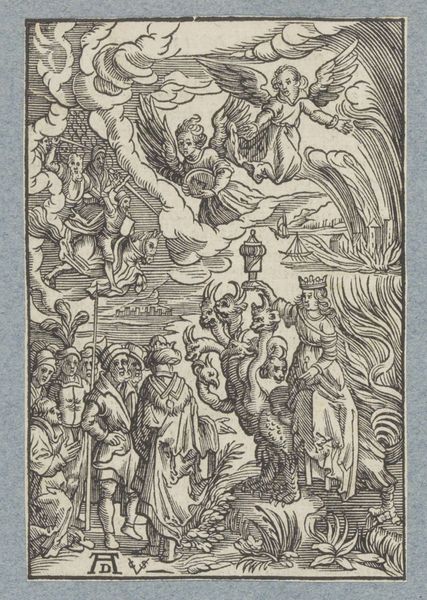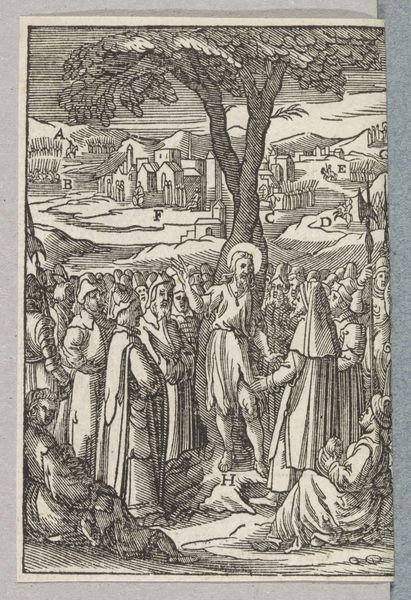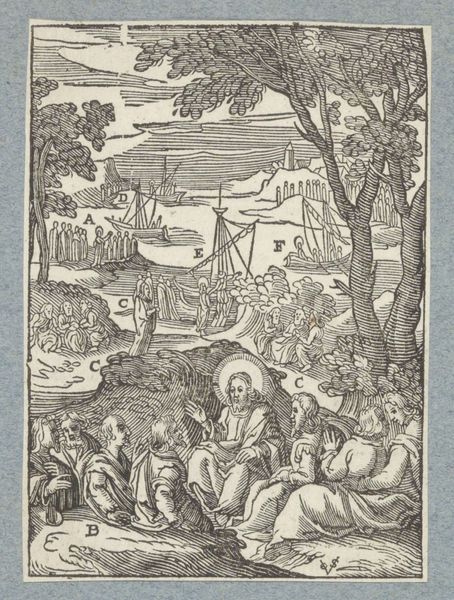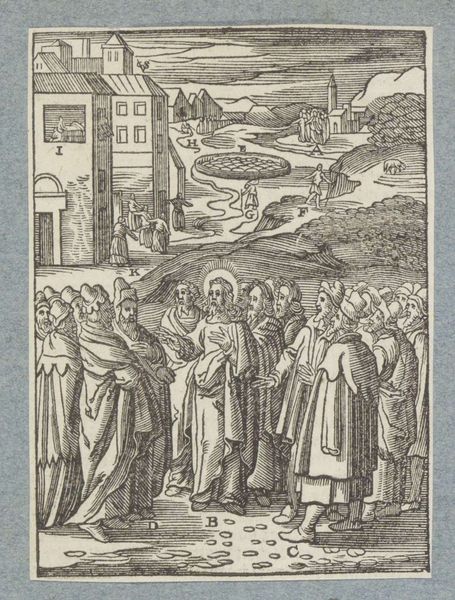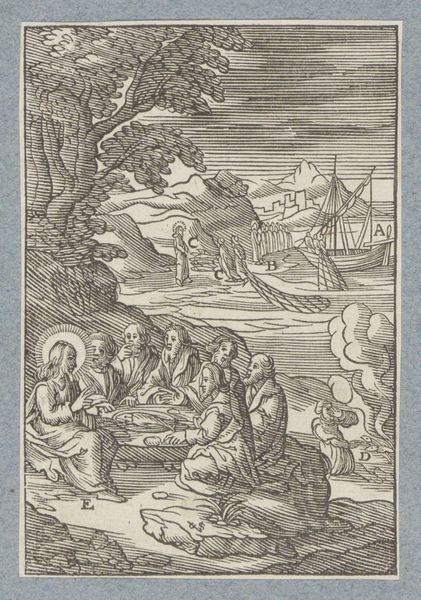
print, engraving
#
narrative-art
#
baroque
# print
#
figuration
#
line
#
history-painting
#
engraving
Dimensions: height 102 mm, width 74 mm
Copyright: Rijks Museum: Open Domain
Curator: Let's turn our attention to "Christus geneest een melaatse," or "Christ Healing a Leper," a compelling engraving from 1629 by Christoffel van Sichem II, currently residing at the Rijksmuseum. It immediately strikes me as rather severe in its formal arrangement and rather stark contrasts. Editor: My eye is drawn to the intricacy of the lines – the sheer labor involved. Can you imagine the artisan meticulously carving those details into the block? It speaks volumes about the role of craftsmanship in disseminating these biblical narratives. Curator: Precisely. Van Sichem, firmly within the Baroque style, exploits the stark contrast between light and shadow achieved through precise line work to create an emotionally charged scene. Observe how he uses hatching to build up the dramatic folds of Christ’s robes, thus indicating form. Editor: And note how the landscape is not mere backdrop, but an active participant. The elevated position of the crowd in the background almost feels like it's looking down, reinforcing the idea of Christ's healing as a public spectacle, made for widespread viewing and contemplation through this reproductive print. The act of making, replicating and distributing ensures the message is disseminated broadly. Curator: I am fascinated by the use of space. There are three discrete groupings separated by these topographic shifts. Christ, the leper, and his retinue occupy the lower ground; another set of disciples in the mid-ground; a crowd amassed at the hilltop. The composition directs our gaze towards Christ, and underscores the divine action underway. Editor: Agreed. Thinking materially, engraving allowed for multiple impressions, making religious stories accessible across social classes. The woodblock itself and its endurance, facilitating mass distribution, served almost as a conduit connecting belief to broader society. I think considering the social implications adds such depth. Curator: Yes, it speaks volumes about its role in society. Ultimately, van Sichem’s masterful handling of line, combined with the scene's allegorical content, ensures this print is more than mere depiction—it becomes an exercise in conveying the metaphysical and sacred. Editor: Indeed, by understanding its materials and place in its historical moment, it offers layers of interpretation.
Comments
No comments
Be the first to comment and join the conversation on the ultimate creative platform.
